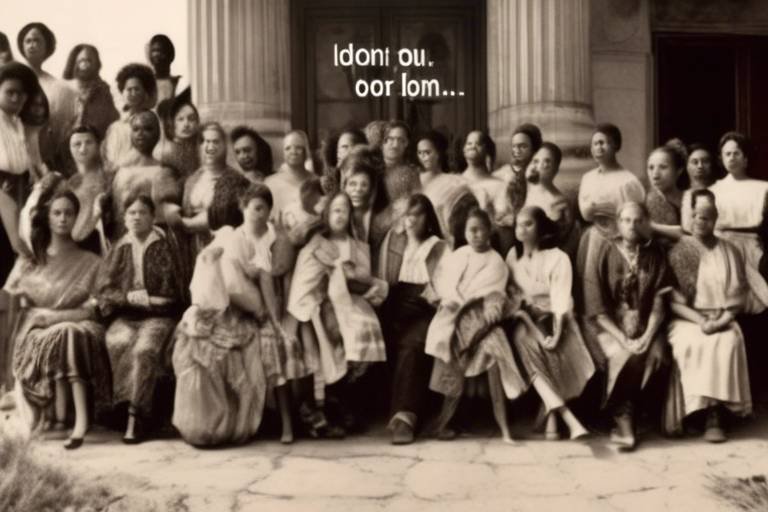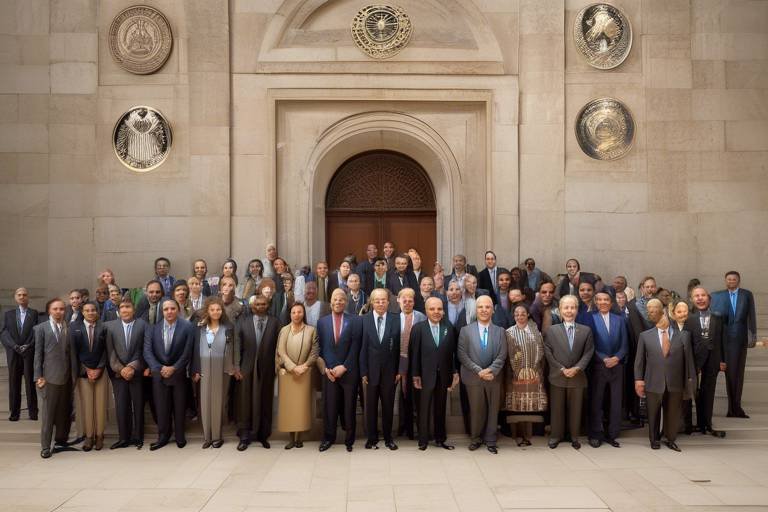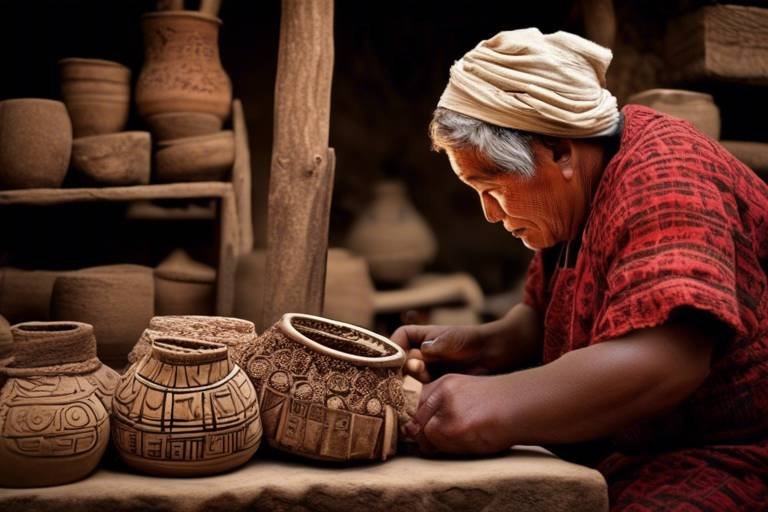The Impact of Ancient Religions on Social Hierarchies
Ancient religions have played a profound role in shaping social hierarchies throughout history, leaving a lasting impact on the structures, roles, and power dynamics within societies. These belief systems have influenced how individuals are positioned and valued within their communities, creating intricate webs of authority and influence that continue to resonate in modern times.
One significant aspect of ancient religious influence on social hierarchies was the role of the priesthood. The priestly class often held immense power, acting as intermediaries between the divine and the people. Their influence extended beyond spiritual matters, shaping governance and societal norms through their perceived connection to the gods.
Divine monarchy, another concept deeply rooted in ancient religions, established the idea of rulers deriving their authority directly from the gods. This belief in divine right to rule not only legitimized the power of monarchs but also reinforced hierarchical structures within societies, placing rulers at the top of the social ladder.
Caste systems, as seen in ancient Hinduism, rigidly defined social status and roles based on birth and occupation. These systems created stratified societies where individuals' positions were predetermined, reinforcing social hierarchies and limiting social mobility based on one's caste.
Gender roles, prescribed by ancient religious beliefs and texts, also played a crucial role in shaping social hierarchies. Expectations and norms regarding the roles of men and women were often dictated by religious teachings, influencing power dynamics and social structures within communities.
Ancient religious laws and moral codes governed social behavior and justice systems, dictating how power was distributed within communities. These sacred laws not only regulated individual conduct but also reinforced existing social hierarchies by enforcing norms and values set by religious authorities.
The relationship between ancient religious institutions and elite classes further solidified social hierarchies. Elite patronage of religious institutions provided rulers and nobility with legitimacy and control, influencing the distribution of power and resources within societies.
Instances of rebellion and revolution driven by religious beliefs challenged established social hierarchies, sparking movements aimed at reshaping power structures. These uprisings often sought to dismantle oppressive systems and create more equitable societies based on alternative religious or moral frameworks.
The legacy of ancient religions on social hierarchies continues to shape modern societies, influencing cultural norms, values, and power dynamics. The echoes of these ancient belief systems can be seen in contemporary social structures, highlighting the enduring impact of religion on how individuals are positioned within their communities.

Role of Priesthood
The role of priesthood in ancient societies was paramount in shaping social hierarchies and governance structures. Priestly classes held significant influence, often acting as intermediaries between the divine and the people. Their role extended beyond spiritual matters, as they also played key roles in decision-making processes, advising rulers, and maintaining societal order.
Within ancient religious systems, priests were not only responsible for conducting rituals and ceremonies but also for interpreting divine will and guiding the community in matters of morality and ethics. Their authority often transcended political boundaries, and they wielded considerable power in shaping social norms and values.
One of the key functions of the priesthood was to ensure the continuity and stability of the social order by upholding religious traditions and customs. They were seen as the guardians of sacred knowledge and the keepers of divine wisdom, which gave them a privileged position in society.
Moreover, the priesthood often enjoyed special privileges and exemptions from certain societal obligations, further solidifying their status within the social hierarchy. Their close association with the divine elevated their position, allowing them to exert influence over both the ruling elite and the common people.
Through their teachings and guidance, the priesthood not only reinforced existing power structures but also legitimized the authority of rulers and nobility. Their role in mediating between the earthly realm and the divine realm was crucial in maintaining social cohesion and order within ancient societies.

Divine Monarchy
Divine monarchy was a concept deeply rooted in ancient societies, where rulers claimed their authority and legitimacy from the gods themselves. This belief system had a profound impact on social hierarchies, as it positioned the ruler as a divine figure with a direct connection to the gods. The idea of divine right to rule not only justified the ruler's power but also solidified their position at the top of the social hierarchy.
In these societies, the ruler was often seen as a representative of the gods on earth, responsible for maintaining order, justice, and prosperity among the people. This divine mandate to rule bestowed upon the monarch a sense of sacred duty and elevated their status above all others in the social structure. The association with the divine not only legitimized the ruler's authority but also reinforced the existing power dynamics within the society.
Furthermore, the concept of divine monarchy was intricately linked with religious rituals and ceremonies that emphasized the ruler's divine connection. These rituals served to reinforce the ruler's legitimacy and divine status in the eyes of the people, further solidifying their position at the pinnacle of the social hierarchy. The intertwining of religion and governance in the form of divine monarchy created a system where power, authority, and spirituality were deeply intertwined.

Caste Systems
When delving into the impact of ancient religions on social hierarchies, one cannot overlook the profound influence of caste systems. These systems, particularly prominent in ancient Hinduism, played a pivotal role in shaping societal structures by categorizing individuals based on their birth and occupation.
Imagine a society where your social status and opportunities in life are predetermined not by your actions or abilities, but by the circumstances of your birth. This was the reality for many ancient civilizations that adhered to rigid caste systems, where individuals were born into specific social classes with prescribed roles and responsibilities.
The caste system was not merely a division of labor but a complex hierarchy that dictated every aspect of one's life, from marriage prospects to occupational choices. At the top of the hierarchy were the Brahmins, the priestly class responsible for religious rituals and teachings. Below them were the Kshatriyas, the warrior and ruling class, followed by the Vaishyas, the merchants and landowners, and finally the Shudras, the laborers and servants.
Each caste had its own set of privileges and restrictions, with strict rules governing interactions between different groups. The concept of purity and pollution further reinforced these divisions, leading to social segregation and discrimination based on one's caste.
Moreover, the caste system perpetuated inequality and limited social mobility, as individuals were largely confined to the status they were born into. This entrenched social hierarchy not only determined one's social standing but also influenced access to resources, opportunities, and power within the community.
Over time, the caste system became deeply ingrained in the social fabric of ancient societies, shaping relationships, occupations, and even religious practices. Despite efforts to reform or abolish caste-based discrimination, its legacy continues to impact modern societies, highlighting the enduring influence of ancient religious beliefs on social hierarchies.

Gender Roles
Exploring how ancient religious beliefs influenced and shaped social structures, roles, and power dynamics within societies throughout history.
Gender roles in ancient societies were heavily influenced by religious beliefs and texts, often prescribing specific expectations and behaviors for men and women. These roles played a crucial part in determining the social hierarchy and power dynamics within communities.
Ancient religions often portrayed men as the providers and protectors, while women were seen as caretakers and homemakers. These gender roles were deeply ingrained in societal norms and were enforced through religious teachings and cultural practices.
Furthermore, certain ancient religions assigned spiritual and religious duties based on gender, with men typically holding positions of authority within religious institutions, while women were often restricted to supporting roles or specific rituals.
The concept of gender roles in ancient societies not only influenced individual behavior but also structured the division of labor, inheritance rights, and social interactions. These roles were not only reflective of societal norms but were also justified and perpetuated through religious doctrines.
Overall, the influence of ancient religious beliefs on gender roles had a profound impact on shaping social hierarchies and power dynamics, laying the foundation for the gender norms and expectations that persisted for centuries.

Sacred Laws and Justice
Exploring how ancient religious beliefs influenced and shaped social structures, roles, and power dynamics within societies throughout history.
Examining how the priestly class in ancient religions held significant influence over social hierarchies and governance, often acting as intermediaries between the divine and the people.
Discussing the concept of divine right to rule, where rulers in ancient societies claimed their authority and legitimacy from the gods, impacting social hierarchies.
Analyzing how ancient religions like Hinduism established rigid caste systems, determining social status and roles based on birth and occupation, shaping societal hierarchies.
Exploring how ancient religious beliefs and texts prescribed specific gender roles and expectations, influencing the social hierarchy and power dynamics between men and women.
Investigating how ancient religious laws and moral codes governed social behavior, justice systems, and the distribution of power within communities and hierarchies. These sacred laws served as the foundation for societal order, dictating norms, values, and ethical conduct. Justice, guided by religious principles, played a crucial role in maintaining social harmony and resolving conflicts among individuals and groups.
Examining the relationship between ancient religious institutions and elite classes, exploring how patronage and support from rulers and nobility impacted social hierarchies.
Discussing instances where religious beliefs and movements challenged existing social hierarchies, sparking rebellions and revolutions that aimed to reshape power structures.
Reflecting on how the impact of ancient religions on social hierarchies continues to resonate in modern societies, shaping cultural norms, values, and power dynamics.

Elite Patronage
Elite patronage in ancient societies played a crucial role in shaping social hierarchies and power dynamics. The relationship between religious institutions and the elite classes was often characterized by mutual support and benefits. Elite patrons, such as rulers and nobility, provided financial and political backing to religious institutions, gaining legitimacy and divine favor in return.
This patronage system reinforced existing social hierarchies, as religious leaders aligned themselves with the elite to maintain their influence and authority. In return, the elite received spiritual guidance, legitimacy for their rule, and access to religious ceremonies and rituals that solidified their status in society.
Furthermore, elite patronage often led to the accumulation of wealth and resources by religious institutions, increasing their power and influence within the community. The close relationship between the religious and political elite further entrenched the social hierarchy, with the elite using religion as a tool to control and govern the masses.

Rebellion and Revolution
Exploring how ancient religious beliefs influenced and shaped social structures, roles, and power dynamics within societies throughout history.
Rebellion and revolution have often been catalysts for significant social change throughout history, challenging established hierarchies and power structures. In the context of ancient religions, instances of rebellion were not uncommon, as beliefs and movements clashed with existing societal norms.
One notable example is the Jewish rebellion against the Roman Empire in the 1st century CE, led by figures such as Judas Maccabeus and later culminating in the Great Jewish Revolt. These uprisings were fueled by religious fervor and a desire for independence, challenging the authority of the ruling elite and reshaping the social hierarchy in the region.
Similarly, the Protestant Reformation in the 16th century can be viewed as a religious revolution that sparked significant social and political changes across Europe. Figures like Martin Luther challenged the authority of the Catholic Church, leading to widespread upheaval and the fracturing of established power structures.
Rebellions driven by religious beliefs often sought to address perceived injustices and inequalities within society, aiming to create a more equitable and just social order. These movements were not only about challenging existing hierarchies but also about redefining the relationship between the individual, the state, and the divine.
While some rebellions led to immediate changes in social hierarchies, others had a more lasting impact on the cultural and political landscape, shaping the course of history for generations to come. The legacy of these rebellions serves as a reminder of the power of religious beliefs to inspire individuals to challenge authority and fight for a more just and equitable society.

Legacy and Modern Influences
Ancient religions have left a profound legacy that continues to influence modern societies in various ways. The impact of these ancient beliefs on social hierarchies can still be observed in contemporary cultural norms, values, and power dynamics. For example, the concept of divine right to rule, where rulers derive their authority from the gods, has evolved into modern ideas of political legitimacy and governance.
Moreover, the caste systems established by ancient religions like Hinduism have persisted in some regions, affecting social status and roles based on birth and occupation. This legacy shapes societal hierarchies and can be seen in the persistence of social stratification in certain societies today.
Ancient religious laws and moral codes have also influenced modern legal systems and ethical frameworks. The principles of justice and morality derived from these ancient beliefs continue to inform contemporary debates on issues such as human rights, equality, and social justice.
Furthermore, the relationship between religious institutions and elite classes in ancient societies has parallels in modern times. The influence of religious organizations on politics, economics, and social structures can still be seen today, reflecting a continuity of power dynamics established in antiquity.
In conclusion, the legacy of ancient religions on social hierarchies is a complex and multifaceted phenomenon that transcends time and geography. By understanding the historical roots of these influences, we can gain insights into the dynamics of power, authority, and inequality in modern societies.
Frequently Asked Questions
- What role did the priesthood play in shaping ancient social hierarchies?
The priesthood held significant influence in ancient societies, acting as intermediaries between the people and the divine. They often dictated moral codes, governed religious practices, and had a say in political matters, thus impacting social structures.
- How did the concept of divine monarchy affect social hierarchies in ancient civilizations?
Rulers claiming divine right to rule derived their authority from gods, solidifying their positions in social hierarchies. This belief system justified the concentration of power in the hands of a select few, shaping societal structures and governance.
- What was the significance of caste systems in ancient religions?
Caste systems, such as those in Hinduism, determined individuals' social status and roles based on birth and occupation. These rigid structures influenced every aspect of life, from social interactions to economic opportunities, reinforcing hierarchical divisions.
- How did ancient religious beliefs impact gender roles and power dynamics?
Ancient texts often prescribed specific gender roles, attributing certain qualities and responsibilities to men and women. These beliefs influenced societal expectations, power dynamics, and the distribution of authority within communities.



















